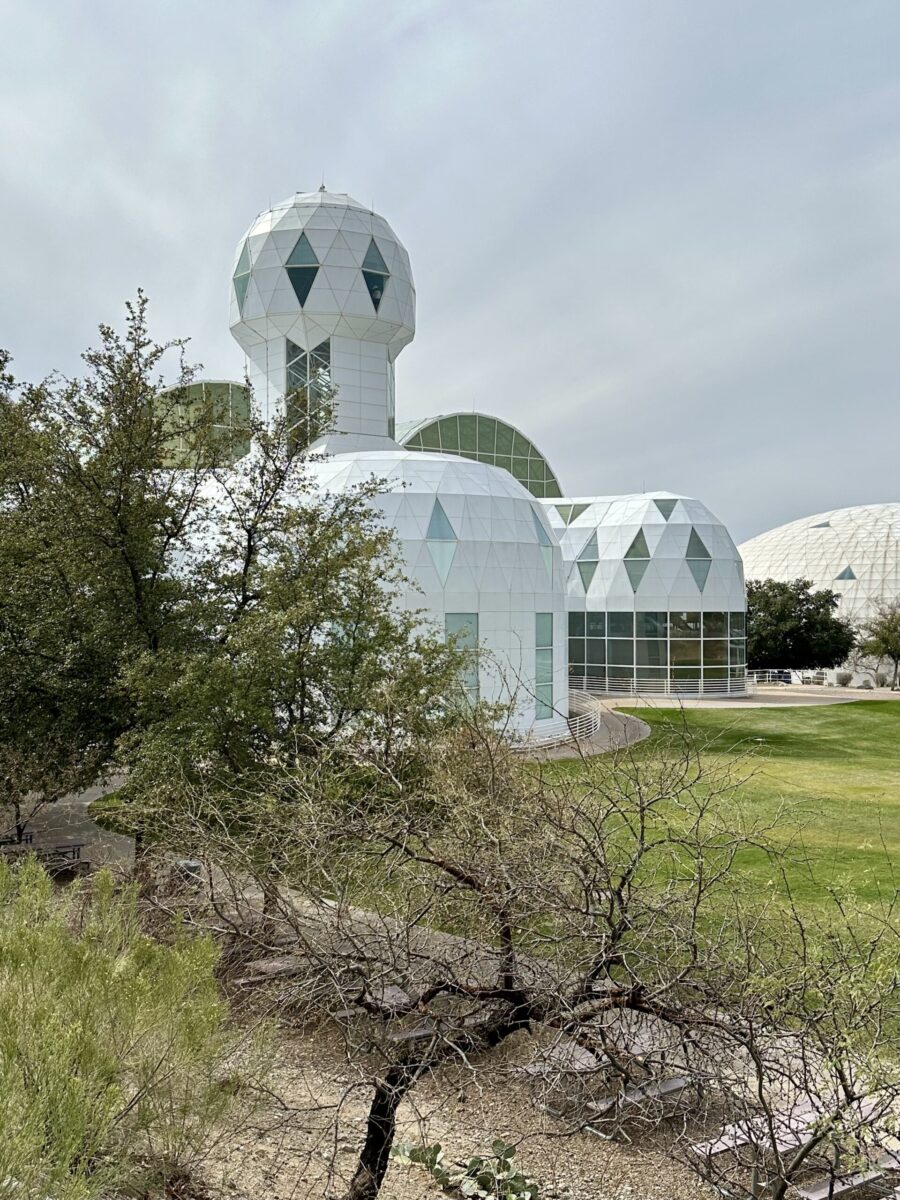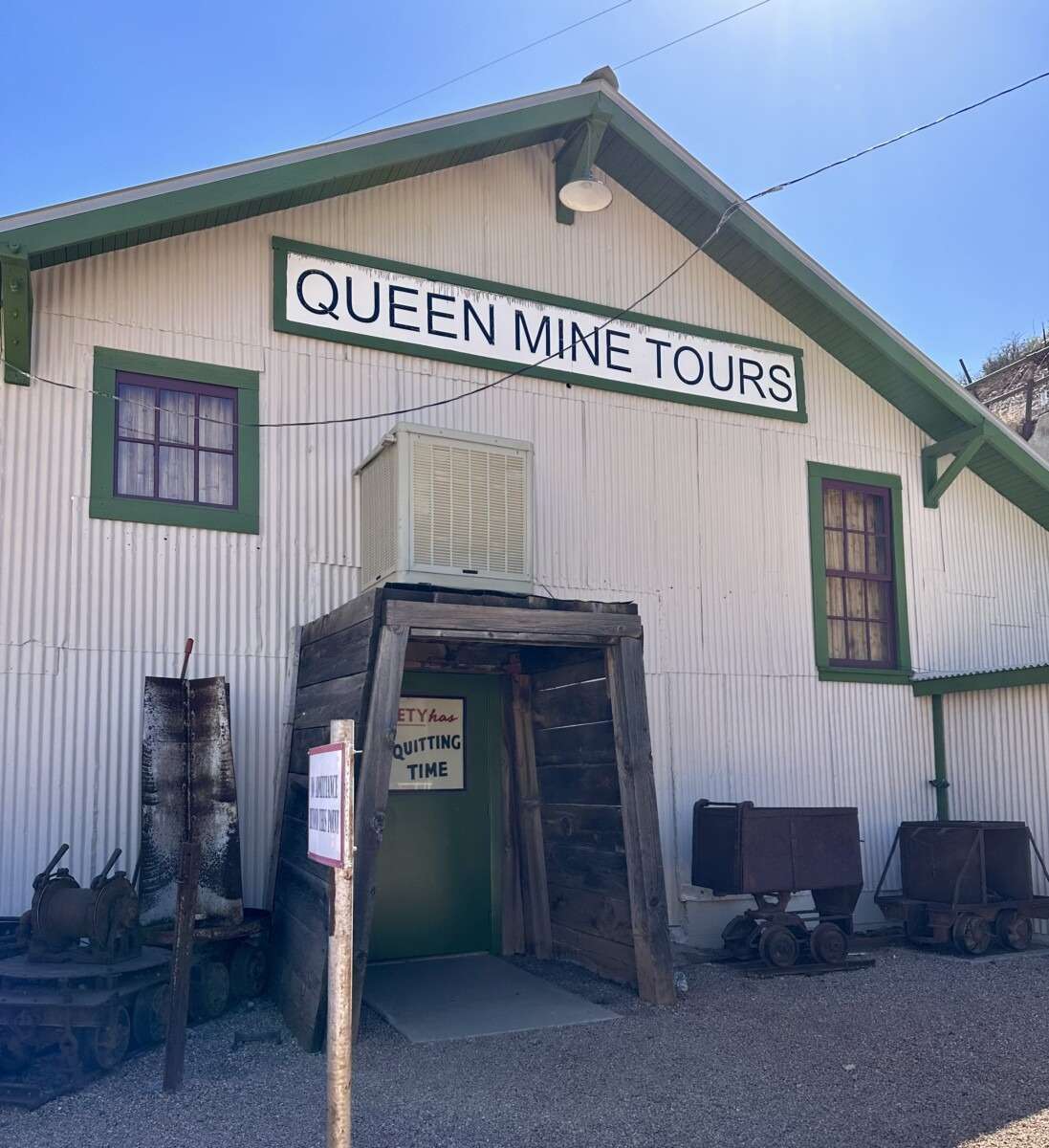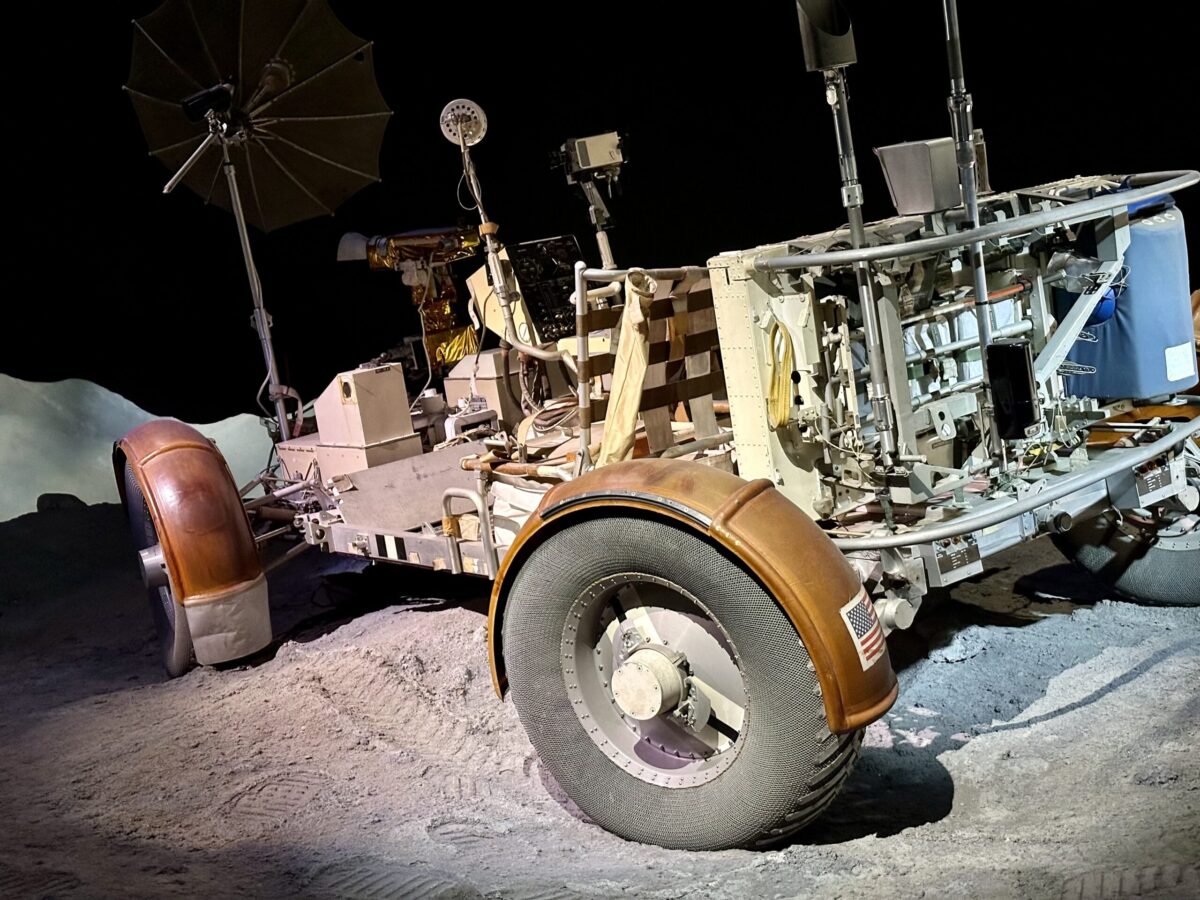We parked our RV at the nearest campground to downtown Philadelphia, Philadelphia South/Clarksboro KOA, just across the river in New Jersey. It was a short 20 min. drive across the Benjamin Franklin Bridge into downtown.

One of the first things we saw was this sign about the Barrymores (you can learn so much interesting trivia reading signs like this while walking around cities). We didn’t realize the family originated from here, or that there were actors so far back in their history.

We came to see the Liberty Bell and found so much more. We began our visit to Independence National Historical Park with a stop at the visitor center. We always stop to pick up maps, see any exhibits, and/or talk to a park ranger. It is the best way, we’ve found, to get the most out of our stop at any of the National Park sites we’ve visited.
This “park represents the founding ideals of the nation, and preserves national and international symbols of freedom and democracy, including Independence Hall and the Liberty Bell. The Declaration of Independence and U.S. Constitution were both debated and signed inside Independence Hall, a UNESCO World Heritage Site.” NPS (National Park Service)

Just outside of the visitor center is the President’s House Site. “Completed in 2010, the memorial, President’s House: Freedom and Slavery in the Making of a New Nation, is an open-air pavilion that shows the outline of the original buildings and allows visitors to view the remaining foundations.” – Wikipedia

“In the 1790s, at the President’s House location at Sixth and Market Streets, Presidents George Washington and John Adams lived and conducted their executive branch business.” – NPS
“Washington’s large staff included at least nine enslaved Africans. Adams never owned slaves.” – NPS
“The forefathers fought hard to attain freedom for “We the People” but in one of our nation’s great paradoxes, President George Washington brought at least nine enslaved Africans from his Mount Vernon home to live and work in the President’s House, which stood just one block from Independence Hall.” – Visitphilly.com

- Strange to think a place as significant as this was almost completely lost. “After 1800 the house became the Francis’s Union Hotel (which failed). In 1832, the building was gutted, leaving only the side walls and the foundations, and three narrow stores were built within the frontage. Most of the western wall was removed by 1941, and what remained of it along with the eastern wall were demolished in 1951 to create Independence Mall.” – USHistory.org

“The State House bell, now known as the Liberty Bell, rang in the tower of the Pennsylvania State House. Today, we call that building Independence Hall.” – NPS

“Speaker of the Pennsylvania Assembly Isaac Norris first ordered a bell for the bell tower in 1751 from the Whitechapel Foundry in London. That bell cracked on the first test ring. Local metalworkers John Pass and John Stow melted down that bell and cast a new one right here in Philadelphia. It’s this bell that would ring to call lawmakers to their meetings and the townspeople together to hear the reading of the news.” – NPS

“No one recorded when or why the Liberty Bell first cracked, but the most likely explanation is that a narrow split developed in the early 1840’s after nearly 90 years of hard use.” – NPS


“No one living today has heard the bell ring freely with its clapper, but computer modeling provides some clues into the sound of the Liberty Bell.” – NPS

“Slave quarters for Washington’s stablehands were 5 feet from entrance to Liberty Bell Center (the Liberty Bell was the symbol of the Abolition movement)” – USHistory.org


“The two lines of text around the top of the bell include the inscription of liberty, and information about who ordered the bell (Pennsylvania Assembly) and why (to go in their State House):
Proclaim LIBERTY throughout all the Land unto all the Inhabitants thereof Lev. XXV X
By Order of the ASSEMBLY of the Province of PENSYLVANIA [sic] for the State House in Philada
The information on the face of the bell tells us who cast the bell (John Pass and John Stow), where (Philadelphia) and when (1753):
Pass and Stow
Philada
MDCCLIII
The bell weighed 2,080 lbs. at order. It is made of bronze. It’s 70% copper, 25% tin and contains small amounts of lead, gold, arsenic, silver, and zinc. The bell’s wooden yoke is American elm, but there is no proof that it is the original yoke for this bell. While there is evidence that the bell rang to mark the Stamp Act tax and its repeal, there is no evidence that the bell rang on July 4 or 8, 1776.” – NPS



Next to Independence Hall is another historic building, Old City Hall, which you can tour. However, you will need to make a reservation since capacity is limited due to Covid.

“This building, completed in 1791, once served as City Hall for Philadelphia. During the 1790s, the courtroom was used by the Supreme Court of the United States. City Council met on the second floor while court convened below.” – NPS
You can still go in to the gift shop on the first floor. Pro tip: If you are collecting National Park Cancellation Stamps in your Passport book there are “extra” stamps (besides the many at the Visitor Center) at both Old City Hall and Ben Franklin’s Museum.

As you walk around keep your eyes open, there are many interesting signs tucked into courtyards. This one was on the entrance to a shaded courtyard in front of the Library of the American Philosophical Society (APS).


“In April 1814, President James Madison, who had opposed the creation of the first Bank of the United States in 1791, reluctantly admitted to the need for another national bank. He believed a bank was necessary to finance the war with Britain. But later that year, progress in peace negotiations led Madison to withdraw his support for the proposed national bank.” “In January 1815, the United States had been without a national bank for almost four years.” – Federal Reserve History
“After much debate and a couple of additional attempts, Madison finally signed in April 1816 an act establishing the second Bank of the United States.” – Federal Reserve History

“In 1828, Andrew Jackson, hero of the Battle of New Orleans and a determined foe of banks in general and the second Bank of the United States in particular, was elected president of the United States. A request to renew the Bank’s charter was sent to Congress in January 1832, four years before the charter was set to expire. The legislation passed both the House and Senate, but it failed to garner enough votes to overcome Jackson’s veto.” – Federal Reserve History
“Shortly after the election, Jackson ordered that federal deposits be removed from the second National Bank and put into state banks. In April 1834, the House of Representatives voted against rechartering the Bank and confirmed that federal deposits should remain in state banks. It would be more than seventy-five years before the United States made another attempt to establish a central bank.” – Federal Reserve History

Today the building that was the second Bank of the United States is a portrait gallery. “Portraits of George and Martha Washington, Mohawk Chief Joseph Brant, Dolley Madison, John Paul Jones, and others bring the revolutionary period to life.” – NPS

Across the street from the second Bank of the US building is Carpenters’ Hall. “Carpenters’ Hall is the official birthplace of the Commonwealth of Pennsylvania and a key meeting place in the early history of the United States.” – Wikipedia
“On September 5, 1774, the first Continental Congress in the United States met in Philadelphia to consider its reaction to the British government’s restraints on trade and representative government after the Boston Tea Party.” – The National Constitution Center

“The group of colonial luminaries didn’t meet in Independence Hall (which, at the time, was called the Pennsylvania State House). Instead, delegates selected by colonial legislatures met next door in Carpenters’ Hall, which had just been constructed. The State House was already occupied by the Pennsylvania provincial assembly.” – The National Constitution Center
It’s funny how something so simple as one hall being unavailable and another building being new and big enough to hold enough people, can make history.
“The delegates gathered on the morning of September 5 at Philadelphia’s City Tavern, near Benjamin Franklin’s home. The group then walked over to Carpenters’ Hall to inspect the meeting room. “They took a view of the room, and of the chamber where is an excellent library… The general cry was, that this was a good room, and the question was put, whether we were satisfied with this room? and it passed in the affirmative,” said John Adams.” – The National Constitution Center

“Benjamin Franklin owned a large house in the courtyard behind five houses on Market Street. Today the courtyard holds a “ghost house” and museum. Townhouse exhibits include a 1700s print shop, a post office, and an archeological exhibit.” – NPS
The Ben Franklin Post Office is located here. “On July 26, 1775, the U.S. postal system is established by the Second Continental Congress, with Benjamin Franklin as its first postmaster general.” – History.com

“There were no post offices in the colonies, so mail was typically left at inns and taverns.”
“In 1753, Benjamin Franklin, who had been postmaster of Philadelphia, became one of two joint postmasters general for the colonies. He made numerous improvements to the mail system, including setting up new, more efficient colonial routes and cutting delivery time in half between Philadelphia and New York by having the weekly mail wagon travel both day and night via relay teams. Franklin also debuted the first rate chart, which standardized delivery costs based on distance and weight.” – History.com
Next to the Ben Franklin Post Office is an alley which leads to the courtyard where Franklin had his home.

“In 1774, the British fired Franklin from his postmaster job because of his revolutionary activities. However, the following year, he was appointed postmaster general of the United Colonies by the Continental Congress. Franklin held the job until late in 1776, when he was sent to France as a diplomat.” – History.com




We decided to pay for a visit into the museum. It was filled with interesting information about Franklin’s life, family and his inventions.

Among many surprising facts about Benjamin Franklin – he only had two years of formal education.
“Franklin spent just two years attending Boston Latin School and a private academy before joining the family candle and soap making business. By age 12, he was serving as an indentured apprentice at a printing shop owned by his brother, James. Young Benjamin made up for his lack of schooling by spending what little money he earned on books, often going without food to afford new volumes.” – History.com

Another surprising fact, “His son was a British loyalist. Along with the two children he had with his wife, Deborah Read, Franklin also fathered an illegitimate son named William around 1730. The two were once close friends and partners—William helped Franklin with his famous kite experiment—but they later had a major falling out over the American Revolution.” – History.com

Also surprising, “He spent half his life in unofficial retirement. Franklin arrived in Philadelphia in 1723 practically penniless, but over the next two decades he became enormously wealthy as a print shop owner, land speculator and publisher of the popular “Poor Richard’s Almanack.” By 1748, the 42-year-old was rich enough to hang up his printer’s apron and become a “gentleman of leisure.” Franklin’s retirement allowed him to spend his remaining 42 years studying science and devising inventions such as the lightning rod, bifocal glasses and a more efficient heating stove. It also gave him the freedom to devote himself to public service.” – History.com

“Franklin became a hit writer as a teenager. After his brother James founded a weekly newspaper called the New England Courant in the 1720s, a 16-year-old Franklin began secretly submitting essays and commentary as “Silence Dogood,” a fictitious widow who offered homespun musings on everything from fashion and marriage to women’s rights and religion.
The letters were hugely popular, and Mrs. Dogood soon received several marriage proposals from eligible bachelors in Boston. Franklin penned 14 Dogood essays before unmasking himself as their author, much to his jealous brother’s chagrin.” – History.com


In addition to printing and mail service, Franklin designed a musical instrument used by Mozart and Beethoven. He also invented bifocals.


Outside of the courtyard, just a few doors down from the post office is a Printing Office and Bindery with another sign in front explaining the history of this place.


There is so much history in just a few city blocks. We would have explored more but after a full day walking around we were tired and ready to head back across the bridge to the RV. I’m pretty sure we will be back at some point in the future.





Thank you for creating this great article. The two of you are amazing reporters, editors and publishers!